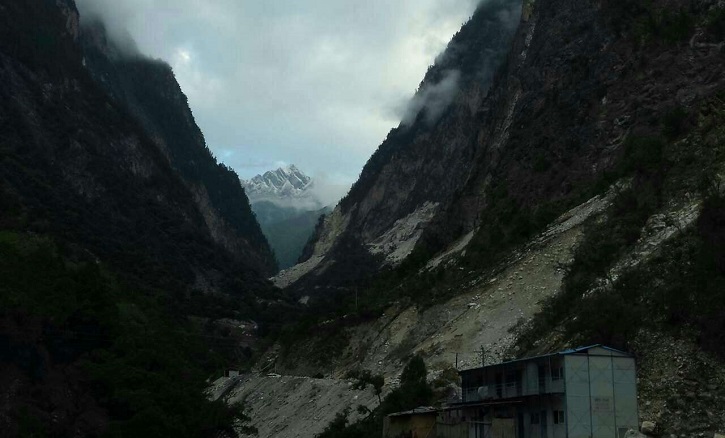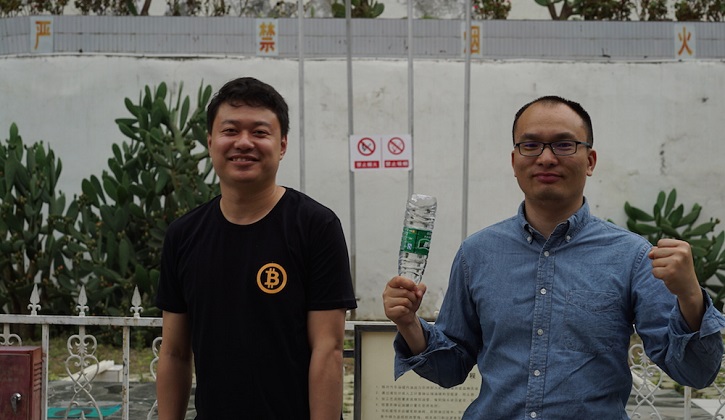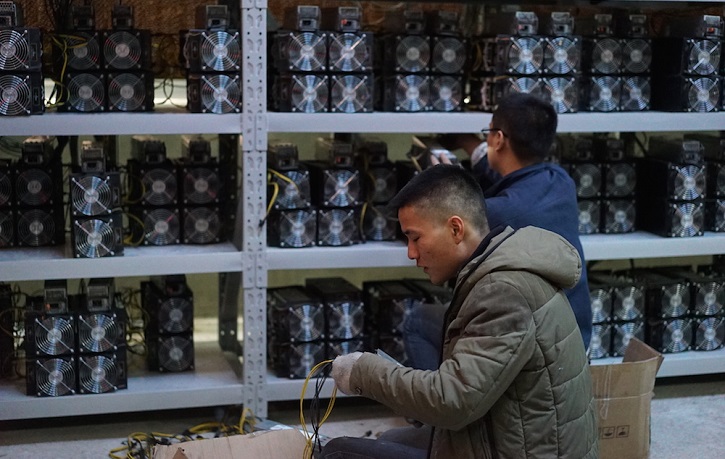China is a primary driving force in Bitcoin due to its large market share in trading and mining. Cointelegraph spoke to HaoBTC CMO, Eric Mu, who described what it’s like to work in a newly built bitcoin mine located in the beautiful and rugged mountains of China’s Sichuan region.
HaoBTC is headquartered in Beijing, and has a mining subsidiary located in Sichuan. It previously hosted the majority of its miners in two mines in Mabian and Meishan, but has since relocated to a new facility in Kangding, Sichuan, due to the region’s favorable climate and low electricity costs.
Located next to a US$10 million hydro-power station, the construction of the new facility cost between US$600,000 and US$700,000, and the company is looking to expand its hash rate and buy even more miners in the near future.
“I will tentatively make the claim that we are the cleanest BTC mining facility in the world.”
-Eric Mu

Cointelegraph: Why did you decide to relocate to the Sichuan province?
Eric Mu: Like all large miners, we are perpetually on the lookout for cheaper power. Chinese mining had previously concentrated in Inner Mongolia and Shanxi, regions rich in coal, resultant in cheaper power. Now they are moving westward en masse because the power there is even cheaper.
CT: What was it like when you first arrived to this location?
EM: Bitcoin is often called the new frontier and you will hardly see a place that’s more frontier than this place. After an eight hour drive from the provincial capital, you enter the mountainous region of the eastern Tibetan plateau. Rocks are the size of houses; the land is barren with small trees; the mountains are untamed like wild cannibalistic beasts.
Then all of a sudden, several warehouse-type buildings have sprung up and heavy-duty trucks loaded with thousands of black metal boxes arrived with a bunch of young people who call themselves miners though they carry no pickaxes. They are Bitcoin miners, the pioneers of the digital frontier.

CT: What are day-to-day operations like and how are the people?
EM: We monitor the conditions of the miners remotely and repair the broken ones. We check the temperature and cooling system, making sure the water pipes are not clogged. We do night patrols to ensure there are no unwanted visitors. People in surrounding areas are migrant workers building tunnels and roads. There are also a few Tibetan villagers.
CT: How big is the team? Do they get paid in bitcoin?
EM: The company has two offices: the Beijing office is where our development team is based. Then we also have an eight-person team at our mining facility. We just interviewed an applicant today so this number may grow to be nine if the guy is lucky. BTC payment is an option; employees can choose whichever way they want to be paid.

CT: What kind of people work at the Bitcoin mining farm? What motivates them to live and work in such an area?
EM: Most of them were electricians or indoors furbishers prior to coming to the BTC mining and some have been working in other BTC mines for as long as two years prior to working for us. Our salary is deemed to be competitive even in the mining industry.
Right now people here work seven-day weeks, but once the construction is done, they will be able to take one month of vacation for every two months of work. China may have a bad labor record, but we try to reverse the image to make sure our people are well taken care of and their morale remains high. We just discussed buying commercial insurance this morning.
CT: What were the biggest difficulties that you faced in the mine? How were these resolved?
EM: Secondhand miners are in short supply. We only realize this when we decided to expand. The timing is perhaps to blame. The old models had been discontinued while the new generation has yet to be released.
CT: What hash rate do you ultimately want to achieve at this facility?
EM: The hydro-power station we work with has a max output in excess of 12,000 kW. Given the 28nm ASIC mining equipment that we are currently using, we estimate the hash rate will top at somewhere between 10P and 12P.
CT: What is the average temperature that you try to maintain inside the farm?
EM: It is between 32 to 37 degrees Celsius most of time, which is deemed very low. This is achieved by a combination of high altitude location, and a highly effective water cooling system. Even in the hottest time of the year, I expect this will be controlled under 40.
“Still we hope one day [the electric company] will accept BTC. There won’t be any direct financial gain for us, but it might be a boon for people’s confidence.”

CT: How much of your revenue is taken by intermediaries (banks, conversion fees, etc.)? How much would you save if the electric power company accepted bitcoin directly?
EM: Very little and very little. We exchange our BTC for fiat on local exchanges. Almost all Chinese exchanges charge no fees for trading and charge a small percentage for cash withdrawal.
Similarly, the Chinese banks charged no fees for domestic transfers. The power station doesn’t accept BTC, for good reason — they have to pay back their bank loans and pay their employees. Still we hope one day they will accept BTC. There won’t be any direct financial gain for us, but it might be a boon for people’s confidence.
CT: Can you give us an estimate of how much you pay per kWh, including fees and taxes?
EM: We run our miners in different locations, and the hydro-power stations usually have tiered pricing system to account for the seasonal rainfall rises and falls — they generated less power in winter so the prices are slightly higher. With everything accounted for, the cost is around US$0.045 per kWh. But as we are still in the process of relocating our miners to the new facility, we expect this number to drop further. Even this price is competitive worldwide, which is why we are confident to invite people to invest with us.
CT: What is the expected return on investment?
EM: There are way too many variables to do a definitive cost calculation. But we expect eight to ten months time to ROI, assuming the BTC prices will stay stable. The estimation took account of the fact that we borrowed some of our funds from our users.
CT: Factoring all of the costs, how much would you say does it cost to mine one bitcoin?
EM: This is by no means accurate, and I do hear a few different versions, but our own estimate is RMB 1,000 [~US$161] (not ours but the average cost in the market) at the current difficulty level.
“When you do the cost assessment, rent, labor cost and hardware shipping time are all important factors. This explained the fast growth of hash rate in China.”

CT: How does this compare to the average rate in parts of the world where bitcoin mining is taking off, particularly Iceland, the Pacific Northwest, etc.?
EM: I don’t have numbers of the mining facilities from these regions. But I heard Chinese investors coming back from Iceland reporting that the non-electricity costs are too high there. When you do the cost assessment, rent, labor cost and hardware shipping time are all important factors. This explained the fast growth of hash rate in China.
CT: How do you handle waste, and how eco-friendly is this facility?
EM: I can’t think of any waste aside from broken miners that had to be junked. Our facility is built right next to the hydro-power station, so even the loss of power in transmission is negligible. We don’t use AC, instead relying mostly on water for cooling, which also saves energy. Hydro power is one of the cleanest forms of energy, so I will tentatively make the claim that we are the cleanest BTC mining facility in the world — I would be very glad to be proven wrong.
CT: Do you mine alt coins?
EM: No.
CT: What are your plans regarding the next Bitcoin halving?
EM: Increase our hash rate and do it as fast as we can. We are still almost a year away from the next halving and we are confident that we will recoup our investment by then. With that said, it does affect the prospect, which is why we work so hard to expand our power and part of the reason that we launched the bank to allow people to invest with us.
“We usually pay our miners in BTC. Granted the number of people accepting BTC is small at the moment, but it is growing.”
CT: How is bitcoin used in China, and are you starting to see regular people become familiarized with cryptocurrency?
EM: Bitcoin is used as the currency in the community, not very different from fiat currency. We usually pay our miners in BTC. Granted the number of people accepting BTC is small at the moment, but it is growing.
Regular people are being introduced to cryptocurrency and I have been witnessing this firsthand. Take the hydro-power station employees, for example. When we first pitched the idea to them, few of them even heard of BTC. Now they are asking how feasible it is to buy a BTC miner and mine at home.
